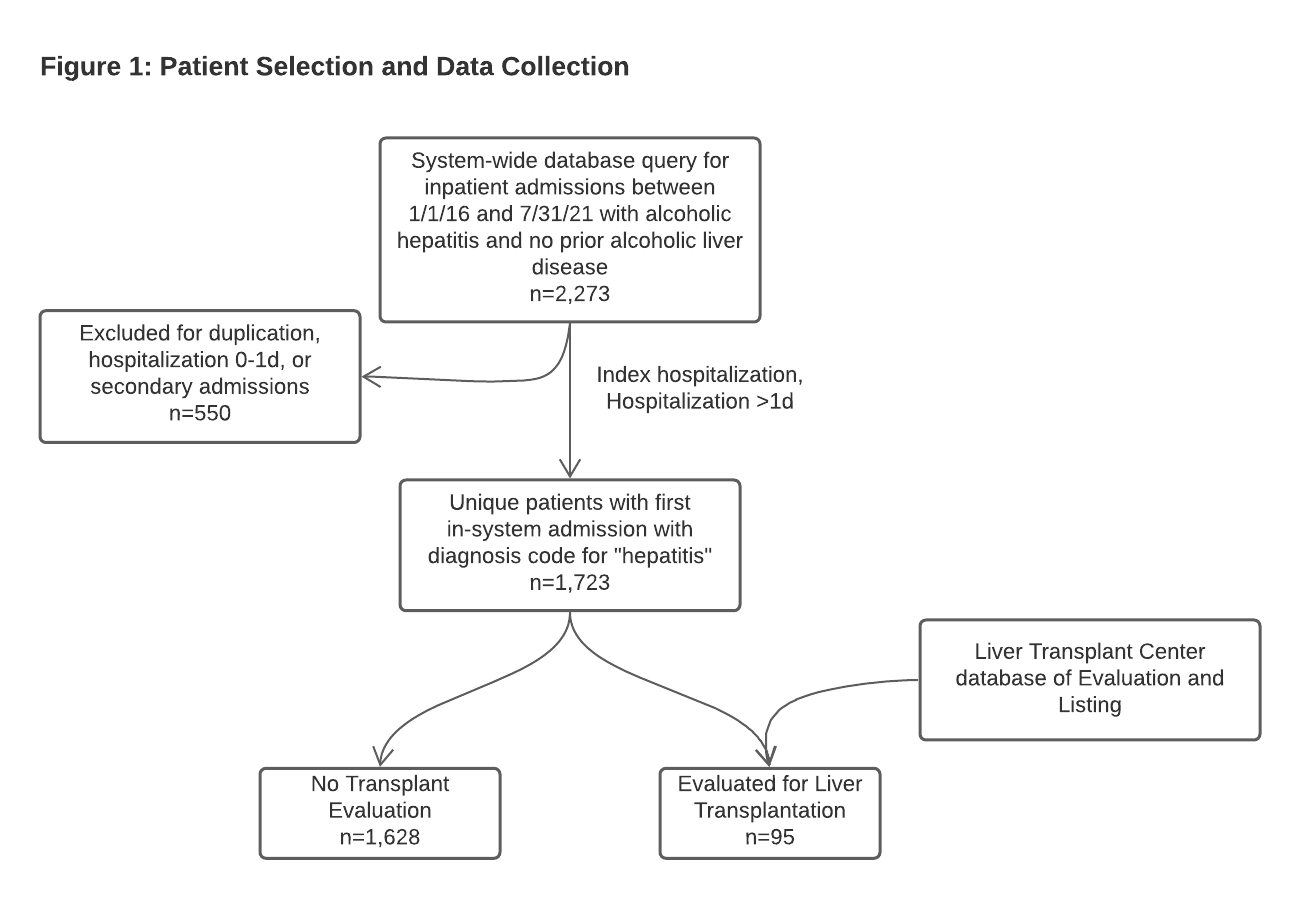Preferred Language And Disease Severity Predict Evaluation For Liver Transplantation Among Patients Admitted With Alcoholic Hepatitis
D. J. Cloonan1, J. Broekhuis2, T. Coe1, S. Criss3, S. Li3, E. Bethea1, H. Yeh1, L. Dageforde1
1Massachusetts General Hospital/Harvard Medical School, Boston, MA, 2Beth Israel Deaconess Medical Center/Harvard Medical School, Boston, MA, 3Harvard Medical School, Boston, MA
Meeting: 2022 American Transplant Congress
Abstract number: 9038
Keywords: Alcohol, Liver, Psychosocial, Resource utilization
Topic: Clinical Science » Liver » 55 - Liver: Recipient Selection
Session Information
Session Time: 5:30pm-7:00pm
 Presentation Time: 5:30pm-7:00pm
Presentation Time: 5:30pm-7:00pm
Location: Hynes Halls C & D
*Purpose: Liver transplantation (LT) for alcoholic hepatitis (AH) without a sobriety period is a relatively new practice. While AH patients are no longer categorically excluded from transplantation, there is variation in evaluation and listing for LT. Here, we explore characteristics of AH patients evaluated for LT within a large integrated health system.
*Methods: Using a system-wide registry from five hospitals (including two tertiary centers), we identified admissions for AH from 1/1/2019-7/31/21 (Figure 1). Patients with prior documented alcoholic liver disease or hospitalization lasting one or fewer days were excluded. In-system patient evaluation was cross-referenced with a center-maintained database of evaluation and listing. A logistic regression model was developed to evaluate independent predictors of LT evaluation.
*Results: Among 1,723 patients with AH, the majority were white (77.8%), male (66.5%), and English-speaking (88.1%), with a mean age of 50.4 years (Table 1). Ninety-five patients (5.5%) underwent evaluation for LT. Evaluated patients were more likely have English as their preferred language (95.8% vs 76.8%, p=0.020), more likely to experience index hospitalization mortality (41.1% vs. 20.4%, p<0.001), had longer hospital stays (7d vs 5d, p=0.005), and had a higher peak INR (2.0 vs 1.4, p<0.001) and peak bilirubin (6.2 vs 2.9, p<0.001). Upon multivariable analysis, patients with English preferred language had a greater than three times adjusted odds of evaluation compared to all others (OR 3.10, 95%CI 1.10-8.37), as did those with increasing peak bilirubin (1.11, 95%CI 1.02-1.20), and increasing peak INR (1.14, 95%CI 1.01-1.28).
*Conclusions: Patients with AH evaluated for LT were more likely to have English as their preferred language, had more severe liver disease, longer hospital courses, and faced higher mortality. As programs expand criteria for LT in the setting of alcohol related liver disease, it is vital to build equitable systems of referral, evaluation, and ultimately transplantation.
To cite this abstract in AMA style:
Cloonan DJ, Broekhuis J, Coe T, Criss S, Li S, Bethea E, Yeh H, Dageforde L. Preferred Language And Disease Severity Predict Evaluation For Liver Transplantation Among Patients Admitted With Alcoholic Hepatitis [abstract]. Am J Transplant. 2022; 22 (suppl 3). https://atcmeetingabstracts.com/abstract/preferred-language-and-disease-severity-predict-evaluation-for-liver-transplantation-among-patients-admitted-with-alcoholic-hepatitis/. Accessed July 18, 2025.« Back to 2022 American Transplant Congress


